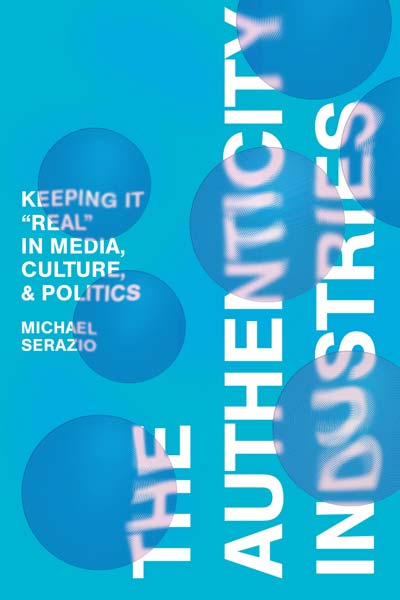Eagles in Hollywood
A few famous BC alumni have been quite busy recently.
Photo: Lee Pellegrini
The Authenticity Industries
Boston College Associate Professor Michael Serazio’s new book explores how claims of authenticity have come to dominate our culture.
In 2016, the pop star Lady Gaga announced a tour of dive bars to promote her new album, Joanne. The small and gritty venues were nothing like the arenas and stadiums where a star of her stature usually plays. They were more intimate and more in keeping with what she called the “raw Americana vibe” of the album. The message was clear: The tour, like the music it supported, represented a return to something real, something authentic. Never mind that the entire tour consisted of just three performances, after which Gaga went right back to the red carpets and arenas, or that it was sponsored by the mammoth brand Bud Light. An appearance of authenticity was the entire point of the exercise, according to Michael Serazio, an associate professor of communications whose new book, The Authenticity Industries: Keeping it “Real” in Media, Culture, and Politics, examines the ways in which presentations of “authenticity” have been used by celebrities, politicians, and marketers who recognize the concept’s power to connect with consumers at a time when people are desperate for something that feels genuine and true.

These claims to authenticity are pervasive enough in our culture that Merriam-Webster named authenticity its 2023 word of the year. But what exactly do we mean when we call something authentic? While reporting his book, Serazio said, he found that people were using authenticity “in really nebulous ways.” When his sources talked about what made something authentic, the word could stretch to fit any number of meanings, with uses as disparate as an effort to show that someone wasn’t doing something for the money and a claim that an independent coffee shop is more appealing than a Starbucks. But the term’s elasticity doesn’t hurt its effectiveness among consumers, and a motivated and ambitious advertiser will take note of what’s working, leading to ever more extensive efforts to craft it for us. “The more savvy these industries become,” Serazio said, “the more difficult it is to know what’s being faked for us and what’s real.”
Serazio dedicates a chapter to reality television, a genre that depends on projecting an aura of authenticity—they’re called reality shows for a reason—but that has had an increasingly difficult time capturing it. Contestants on these shows are supposedly presenting their genuine selves to the audience, but Serazio writes that after years of watching such programming, they fully understand the game: Becoming a star involves amping up the drama and playing to the camera, which by definition means they’re being inauthentic. This dynamic has forced casting directors to go to greater and greater lengths to find truly “authentic” stars who haven’t already been contaminated by watching reality TV programming. A producer for the Netflix show Queer Eye tells Serazio that her desire for a suitable person to appear on the show led her to send a scout “to the same sad mall in Kansas City” every day for two weeks. “Reality TV folks,” Serazio said, “are constantly chasing this thing that is forever eluding their grasp.”
More fascinating is Serazio’s depiction of the degree to which a craving for authenticity has infected politics. Even the election of 2000 showed rumblings of an interest in authenticity from voters, given their vague desire to have a beer with George W. Bush in a way that Al Gore couldn’t capture, suggesting Bush was “real” in a way Gore wasn’t. But the presidential election of 2016, Serazio said, amounted to “a battle royale around the issue of authenticity.” Donald Trump’s late-night tweeting and off-the-cuff speaking style read as authentic to voters, and Hillary Clinton’s more polished presentation read as a veneer. This difference in personal style became one of the major animating forces behind voting decisions, despite the fact that tweeting, or not, isn’t representative of much beyond, well, personal style. “None of this has anything to do with policy or substance, or what they would actually do to govern,” Serazio said.
After reading the book, you start to notice the attempts all around you to package and sell authenticity. “The yearning is real,” Serazio said, for something that feels real, and anyone trying to sell a product is going to respond to it. Your awareness of this can lead to a kind of cynicism about the world, but Serazio cautioned against letting that overshadow your actual feelings about something. Just because a singer or politician is trying to connect with you via claims of authenticity, it doesn’t mean you need to reject the actual policies a politician has in mind, or the music someone is making. “Don’t be cynical about the values that authenticity peddles. Be skeptical about the way that they’re being peddled,” Serazio said. 